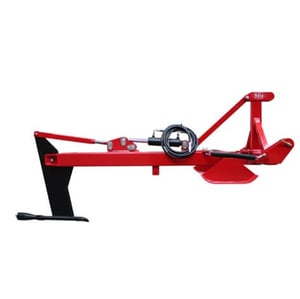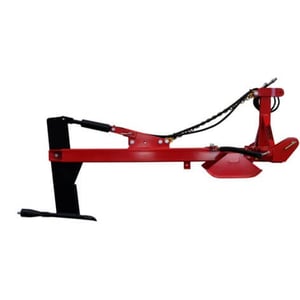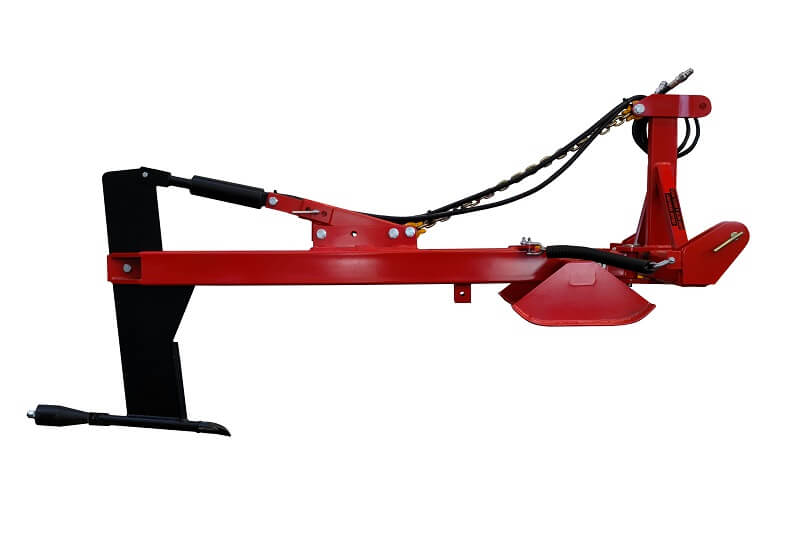Did you that know mole drains can last up to 15 years or more?
It all starts with the direction of travel with the mole in the ground. Pulling a mole drain downhill can be counterproductive as the water has nowhere to flow to and will just pool at the end of the mole drain where the drain leaves the ground and not drain effectively.
Wondering about the long term results of mole ploughing? Find out here
Another good tip is to try to start from open drains if they are available, or from natural waterways like a creek. If neither of these terrain features are available, starting in a lower corner of the paddock may be acceptable if the water can then drain off the property and into waterways. The key thing is to ensure the water will flow away from the area of ponding or sogginess and this involves using gravity to take it downhill. This will ensure the water that is drained away by the mole drain has somewhere to go and you’ll likely see more success with quicker drainage times from your efforts.
The below video is of a mole drain carrying water off a field into an open drain:
If you have open drains with single wire fences, we have a model specifically made for operating in those conditions, the Access Mole Plough.
 The Access Mole plough (pictured left) can be used underneath single wire fences to get into open drains. Click here to see a video of it in action
The Access Mole plough (pictured left) can be used underneath single wire fences to get into open drains. Click here to see a video of it in action
Subsoil types best suited to mole ploughing are clays and heavy soils that mold well and will hold the shape of the mole plough’s revolving plug. If you are in NZ, you can find your area’s soil type in the link below: (look at the type around 30-50cm deep as this is the ideal depth to mole drain, deep enough so that it won’t get ploughed up and shallow enough so the water doesn’t have to travel through too much soil to get to the mole channel)
http://www.nzsoils.org.nz/PageFiles/233/SoilsOfNZ%20By%20Region.pdf
Most soil types in NZ can have effective mole drains installed. In the right conditions, a well thought out and properly installed mole drain can last 15 years or more, however most mole drainage networks work best if they are reinstalled every 2-3 years. In particularly fine sandy soils a yearly refresh of the drainage network may be necessary, but usually this type of soil has excellent drainage and if there is water ponding it is not likely to be for the reason that the water cannot drain through the soil properly, and you’re not likely to see a large benefit from mole drainage.
On the other end of the scale, heavy subsoils such as clays are ideal for mole drainage schemes as they both hold a mole channel very well and also naturally drain very poorly, so benefit greatly from mole ploughing efforts. Peaty subsoils also benefit from mole drainage, although not as much as clays, it is definitely still a worthwhile investment if water ponding and/or soggy paddocks are occurring.
 The Rata Action Mole Plough is particularity well suited to heavy and tightly packed soils, with a ram that forces the blade forward, making the process of pulling the mole plough from the ground when the run is finished much easier - no more taking metres and metres to pull the mole plough out of the ground, just tilt the blade forwards and it comes out within a couple of metres, ensuring you can mole plough as far as possible.
The Rata Action Mole Plough is particularity well suited to heavy and tightly packed soils, with a ram that forces the blade forward, making the process of pulling the mole plough from the ground when the run is finished much easier - no more taking metres and metres to pull the mole plough out of the ground, just tilt the blade forwards and it comes out within a couple of metres, ensuring you can mole plough as far as possible.
Mole plough smarter with the Rata Quickleg™ design - less break points, less worries
Too often mole ploughing is seen as a quick fix to get rid of excess surface water in times of heavy rain, however once surface ponding happens, the best time for mole ploughing is over, and the mole drains created will only last a matter of months versus years when done right, not to mention the soil compaction incurred from driving over waterlogged ground. Mole ploughing when it is too dry results in the soil around the drain cracking, and when it is too wet it will not hold the channel the torpedo is trying to create. Get the timing right when the subsoil is slightly on the moist side of damp, and the drain will set into shape and last for a lot longer.
Interesting reads on mole draining:



.webp)